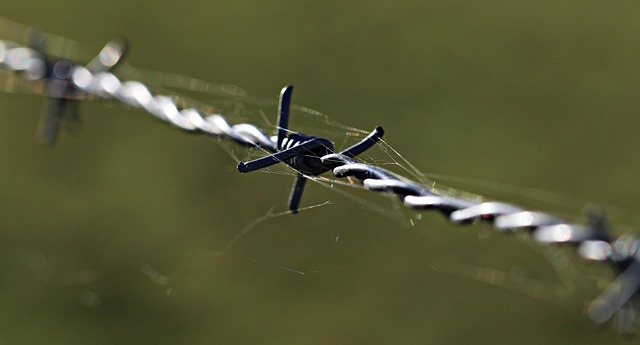Large properties present unique challenges when it comes to fencing, with costs often being a primary concern. This article explores cost-effective solutions for securing expansive lands while enhancing aesthetics and privacy. We delve into natural barriers like living fences, offering both environmental benefits and savings. Additionally, creative approaches to privacy enhancement and longevity in maintenance-friendly options are discussed, providing an extensive guide for property owners seeking affordable fencing alternatives.
- Exploring Affordable Fencing Options for Large Lands
- Natural Barriers: Costs vs Benefits of Living Fences
- Creative Solutions for Extending Property Privacy
- Longevity and Maintenance: Budget-Friendly Choices Matter
Exploring Affordable Fencing Options for Large Lands
When it comes to large properties, fencing can be a significant investment. However, exploring affordable options needn’t mean sacrificing quality or durability. There are several cost-effective fencing solutions that are well-suited for expansive lands. One popular choice is vinyl fencing, known for its low maintenance and long-lasting nature, offering both aesthetic appeal and functionality at a reasonable price point.
Another economical option is chain link fencing, which provides security without breaking the bank. While it may not be as visually appealing as other materials, chain link fences are sturdy, versatile, and easy to install, making them an excellent choice for large properties in need of boundary demarcation and protection. These options cater to various budgets while still providing effective solutions for securing and enhancing large spaces.
Natural Barriers: Costs vs Benefits of Living Fences
Natural barriers like living fences offer an eco-friendly alternative to traditional fencing materials, which can be particularly appealing for large properties. The cost-effectiveness lies in their longevity and reduced maintenance requirements compared to synthetic or wooden fences. Living fences, such as hedges or rows of trees, not only provide privacy but also attract wildlife, enhancing the overall biodiversity of the property. While the initial setup might involve higher costs due to planting and care, they can save money in the long run by eliminating the need for regular replacement or repair.
Moreover, living fences can adapt and grow with the property, providing a dynamic and natural-looking solution. Their aesthetic appeal can add substantial value to the landscape design, creating a harmonious blend of greenery and structure. However, considerations like space availability, climate suitability, and long-term maintenance commitment are essential before opting for this approach, ensuring it aligns with both financial and environmental goals.
Creative Solutions for Extending Property Privacy
Privacy is a top concern for many property owners, especially those with large estates. Traditional fencing methods can be costly and may not offer the level of seclusion needed. However, creative solutions exist to extend privacy while keeping costs manageable. One innovative approach is the use of natural elements like trees and shrubs strategically planted along the perimeter. Not only do they provide a visual barrier but also create a sense of tranquility and harmony with the environment.
Another cost-effective option is integrating living fences, such as hedges or bamboo screens, into the design. These organic barriers can be maintained easily and offer a flexible aesthetic. Additionally, modern materials like eco-friendly composite panels or recycled plastic pickets are available at affordable prices, providing durability and long-lasting privacy without breaking the bank. These creative solutions not only enhance privacy but also add unique visual appeal to large properties.
Longevity and Maintenance: Budget-Friendly Choices Matter
When considering fencing for large properties, longevity and maintenance are key factors to balance with budget considerations. While more expensive materials may offer longer lifespans and reduced maintenance needs, there are cost-effective options that can still provide durability and minimal upkeep.
Choosing materials like vinyl or composite fencing, for instance, can be a smart investment. These synthetic options are resistant to rot, rust, and damage from insects, reducing the need for frequent repairs or replacements. They also require minimal cleaning and maintenance, making them an attractive choice for those seeking both affordability and low-maintenance solutions for their large properties.
